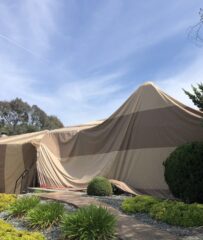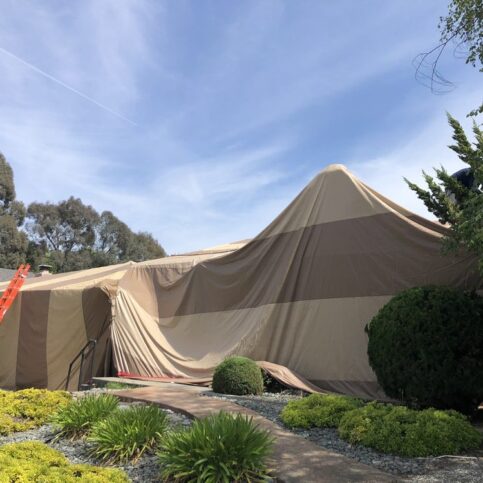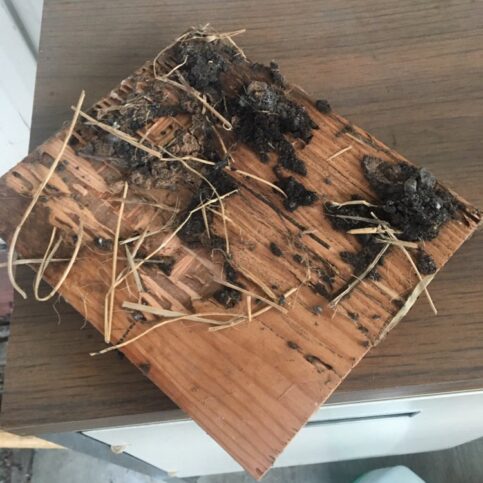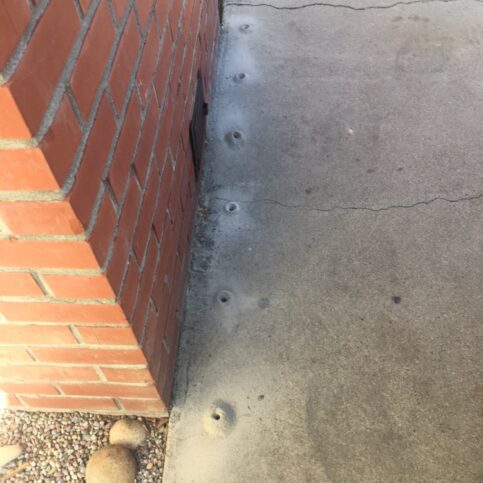Q: How much do termite inspections and treatments cost?
A: It depends on the location and size of your home, the severity of the infestation, and other setup factors. Once we determine those details, we can provide you with an accurate quote. We can give you a rough estimate if information is provided.
Q: How long will it take to fumigate my home?
A: It usually takes less than 48 hours. First, we’ll set up the structure, form a seal and introduce the fumigation products. Everything has to circulate for 24 hours before we aerate the structure for at least 12 hours. Then we’ll test the air quality, and once it’s within permissible limits, we’ll take down the fumigation tarps and clear the structure for safe reentry.
Q: Does drywood termite fumigation affect other types of insects as well?
A: It affects most adult insects and certain arachnids, but exposure times vary from organism to organism. We guarantee the eradication of drywood termites. Collaterally, German cockroaches, adult fleas, silverfish and rodents may be affected. A standard dosage termite fumigation may not affect bedbugs and insects such as beetles because they often require a much higher dose of fumigation for some life stages.
Q: Are there alternatives to fumigation or full treatments?
A: Yes. For example, if you live in a townhome, an apartment or a condominium, we can employ localized treatments (also known as spot treatments) depending on your situation. Sometimes these are more feasible or preferable than fumigation or full treatments.
Q: Is it normal to see termites flying around my property?
A: Yes. Termites are seasonal pests when it comes to their flying forms, and you’ll usually see them during warm summer months, sometimes from April to November. Subterranean termites come out after the first rain or first heat of the season. They need a lot of moisture and heat to swarm. If you have an infestation close to home, that’s when you’ll see them swarming in large groups. After we fumigate your home, you shouldn’t see high numbers of termites, but they’re part of the natural world, so they can still exist in healthy lawns and gardens. If you see them again, don’t be too concerned—we’ll come out and perform an assessment to make sure they haven’t reentered the structure.
Q: Should I get a termite treatment before or after a remodel?
A: It usually makes more sense to fumigate a structure after a complete remodel because the treatments will impact all the new materials in the home. It’s also important to communicate about your timeline because termite companies are usually booked far in advance, so you’ll want to learn about availability for treatments and plan accordingly.
Q: Do you use subcontractors?
A: We work with Nor Cal Fumigation on fumigation projects. We have a good working relationship with them—we know their crew members and understand their setup requirements. It’s common to have a subcontractor for fumigation in the Bay Area due to costs and consistency. Most termite companies can’t support a full fumigation crew’s schedule.
Read moreRead Less









